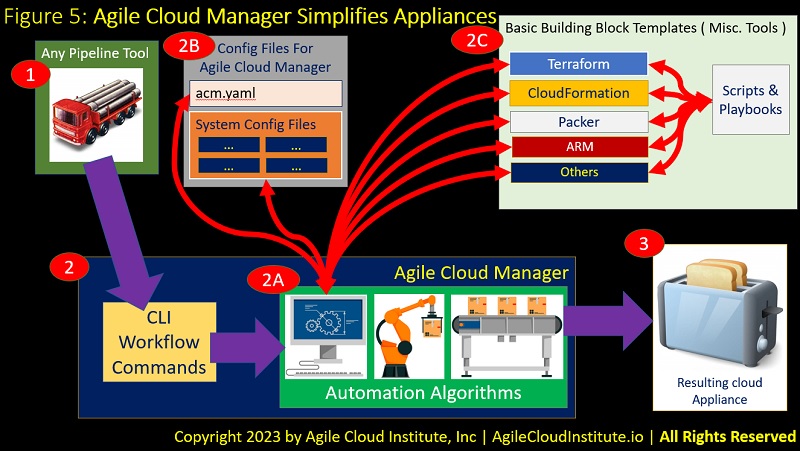Architecting the Agile Enterprise with the Agile Cloud Manager
Part 6 of 16: The Agile Cloud Manager Simplifies Appliances
To make it easier for your teams to upgrade your platform to become a collection of easily-managed appliances, the Agile Cloud Manager uses simple Command Line Interface CLI commands and simple configuration files that make it easy to plug the Agile Cloud Manager into any pipeline tool.
This means that your systems can be controlled interchangeably by Jenkins, Azure Pipelines, CircleCI, GitHub, or any other pipeline tool. The ability to switch back and forth between any pipeline tool is an essential feature which enables you to avoid vendor lock-in while also maximizing the flexibility with which you can manipulate infrastructure and platforms.
Figure 5 is entitled “Agile Cloud Manager Simplifies Appliances”.

Figure 5 shows how the Agile Cloud Manager includes automation algorithms that you can control using pipeline tools that call simple CLI workflow commands.
Figure 5 also shows that you can use simple configuration files to control how those simple CLI workflow commands are executed. What is more, Figure 5 also illustrates how your infrastructure templates then get operated on by the algorithms.
This architecture enables you to separate out different types of code into different building blocks to maximize reusability and to improve the quality and reliability of each reusable element.
You can swap out elements and you can even completely change cloud providers without ever touching your application code because this architecture enables your infrastructure and platform elements to remain safely encapsulated behind a simple interface.
The result is a simple, consistent appliance with which your people and systems can interact easily without ever needing to know where the system is hosted, or which cloud provider is being used as a vendor for the hosting.
back to Site Home
back to Architecture section Home
Back to Part 5 of 16